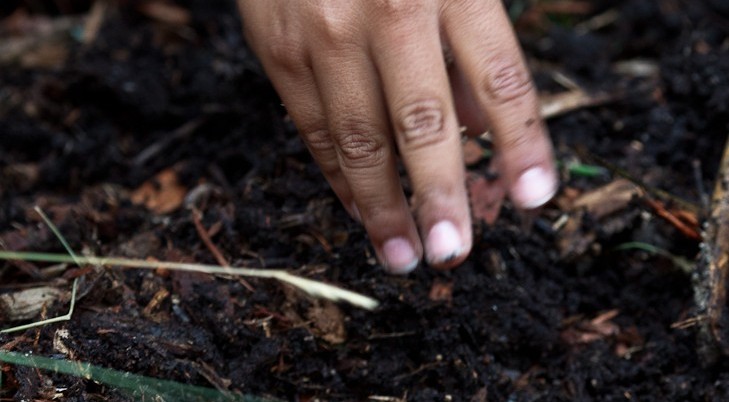Soil is as vital to environmental health as the plants that grow in it. If you watched the latest Ken Burns documentary, The Dust Bowl, or if your forebears settled in California because they had to flee the ruined soil of the Midwest, then you know what Burns means by “the worst man-made ecological disaster in American history.” It was a swift, government-encouraged depletion of previously fertile cropland, where nature and people had once cooperated fairly well.
Likewise, when we pave every patch of green in our cities, we undo the perfect systems that nature takes so long to create.
“Healthy soil means it has life,” says TreePeople’s Lisa Cahill. “Healthy soil is full of bacteria, fungi, nematodes, protozoa, microarthopods, and earthworms.” This community of organisms, and their interactions with plants and larger animals above ground, is known as the soil food web. As Robert Krulwich wrote recently, “They are the critters that create and aerate the soil, that pollinate, that remove the clutter.”
What’s true for your backyard garden and vast tracts of farmland is also true of the urban forest: suck the life out of the soil and you suck out life. Period. A full, healthy tree canopy helps slow and capture rain water and storm runoff, returning moisture to the water table instead of sending it out to sea unfiltered. Compacted, dead soil resists water just like asphalt does. Without healthy soil, trees suffer and fail in their vital function.
So, what’s the equivalent of crop rotation in the middle of a major metropolis? We can correct damage we’ve done stripping the soil of life by keeping soil alive and permeable:
- Tap the magic of mulch: In a natural forest, fallen leaves, branches, and bark accumulate to form a layer of organic matter over the ground. The resulting mulch feeds the ground with nutrients as it breaks down and also acts like a sponge to help the soil absorb and hold water. This process creates healthy soil and has a positive effect on both water quality and quantity. Mulch lies on top of the soil and prevents it from becoming compacted, allowing the ground to stay moist longer.
- Don’t add chemical treatments: Poisoning the urban environment with polluted runoff or chemical treatments cripples the food web and makes it impossible for trees to thrive. Cahill explains, “Whether their design is to eliminate pests or feed plants, they kill off entire portions of the soil food web. Since these chemicals are salts, they pull all the water, and thus the life, out of the soil.”
- Curb your water waste: Yes, soil needs water, but fast-moving runoff actually depletes soil, washing away nutrients and leaving no clean, valuable moisture.
To learn more about how to keep the urban environment healthy, visit www.treepeople.org/learn.

